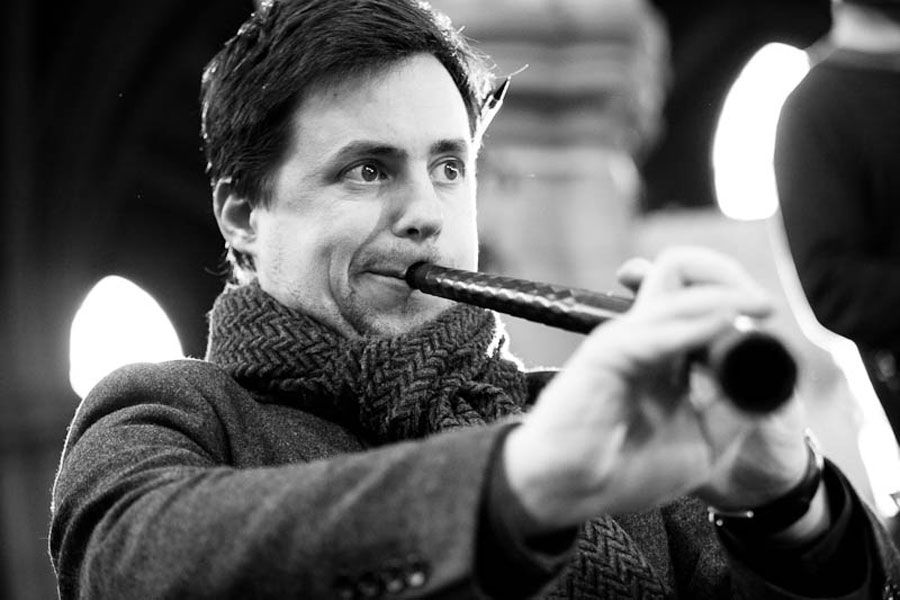The zink is a fascinating instrument. Hearing the name, it is probably not surprising to learn it belongs to the brass instruments group. However, after a closer look, it is clearly devoid of any metal parts. The instrument is made of wood covered in leather and has an ivory mouthpiece. And it is that particular mouthpiece that hides the whole secret of the paradox. The source of the sound in wind instruments is a column of air enclosed in a tube. The column is stimulated for vibration. In case of woodwind instruments, this is achieved by lips or with a reed. Yet, the source of the vibration may also be in the lips pressed against a mouthpiece. Experts refer to such instruments as “organic reed”. Hence all such instruments used in modern symphony orchestra are constructed of metal, the musicians speak of them briefly: brass.
Still, the zink – or cornett – is an early instrument that combines construction elements of both woodwind and brass instruments: the mouthpiece is similar to trumpet, while the body of the instrument has holes drilled on the side, so that the musician works the fingers more like a flutist. With such an impressive combination of materials and design solutions, the cornett has a strong but sweet sound: like a ray of sunshine piercing the shadows, as it was described in the seventeenth century. Zink greatly blends in with the sound of an ensemble, perfectly complementing the lute and the human voice. It is also a very agile, busy instrument, often given solo parts that the zink virtuosos adorn with thousands of small notes. Andrea Inghisciano and Gawain Glenton, both known for their collaboration with leading early music ensembles (Il Giardino Armonico, L'Arpeggiata and many others), will surely present all the advantages of cornets in their performance, especially given that both artists are considered masters of improvisation. The solo parts in the Venetian sonatas preserved in the University Library in Wrocław will gain life and colour.
Another instrument popular in the sixteenth and seventeenth centuries deserves be mentioned in this context: the dulcian. Its resemblance to bassoon is not accidental, since the dulcian is the direct ancestor of the bassoon: it has a double reed and a folded conical bore. Since the instrument is very old, it was built in various “family-choir” sizes, from a soprano to the deepest bass. Virtuosic music of Venetian baroque, uniquely preserved in Wrocław, coupled by the leading contemporary masters of zink: it all makes a great promise of a concert full of unforgettable memories.

